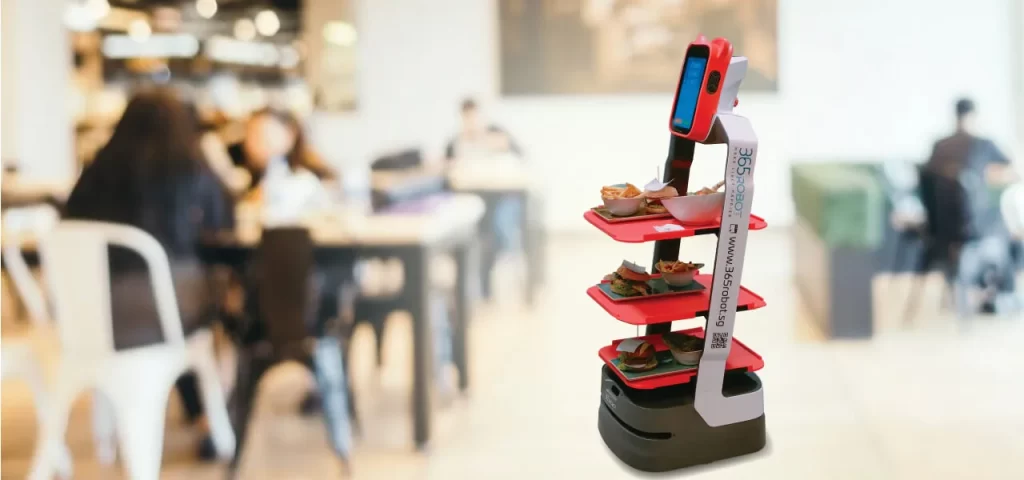In recent years, technology has proliferated in the restaurant industry. From online ordering and delivery to automated cooking machines, the future of dining appears increasingly digital. One trend making headlines is the adoption of restaurant robot waiters. These machines can take orders, serve food, and interact with customers. While the concept of a robot waiter may seem futuristic and exciting, restaurant owners should consider several factors before implementing this technology. In this article, we will explore what restaurant robot waiters are, how they operate, and what restaurants should know. Read on to discover more about restaurant robot waiters and their impact on the industry.
What Are Robot Waiters?
A robot waiter is an AI-powered machine capable of performing various tasks in a restaurant like a human waiter. These include tasks such as taking orders, serving food, and interacting with customers. Robot waiters come with sensors, cameras, and microphones to navigate the restaurant, avoid obstacles, and engage with customers. Restaurants can programme robot waiters to execute specific tasks, such as delivering food or taking orders from patrons. Some robot waiters can even recognize and remember customers’ faces and orders, creating a personalized dining experience.
Robot waiters come in different shapes, sizes, and designs, depending on the manufacturer and the restaurant’s requirements. Some resemble traditional waiters, while others sport a more futuristic appearance. Restaurants can control them remotely or they can operate autonomously, depending on the restaurant’s preference. In countries like China, where labor costs are high and there is a shortage of skilled hospitality workers, the popularity of robot waiters continues to rise.
Advantages of Using Robot Waiters
The use of robot waiters in restaurants offers several advantages. One of the primary benefits is improved efficiency and speed of service. Robot waiters can take orders and deliver food faster than human waiters, reducing wait times for customers. Additionally, they can work longer hours without experiencing fatigue, ensuring consistent service throughout the day. Moreover, employing robot waiters can help reduce labor costs for restaurants, as they do not require salaries, benefits, or breaks. This is particularly advantageous for small restaurants operating within limited budgets.
Another advantage of using robot waiters is their ability to enhance the dining experience for customers. Robot waiters provide a unique and exciting experience, especially for tech-savvy customers and children. Robot waiters can interact with customers, answer inquiries, and make recommendations, creating an engaging and personalized dining experience. Furthermore, robot waiters can help reduce the risk of human errors, such as incorrect orders or spills, minimising customer complaints and negative reviews.
Lastly, implementing robot waiters can improve a restaurant’s overall image and reputation. Restaurants utilizing cutting-edge technology like robot waiters can attract more customers, particularly those interested in trying new experiences. Robot waiters can also generate social media buzz, increasing a restaurant’s visibility and brand awareness.
Disadvantages of Robot Waiters
Although there are several advantages to using robot waiters, there are also some drawbacks that restaurant owners should consider. One significant disadvantage is the high cost associated with purchasing and maintaining robot waiters. Robot waiters may seem expensive, with costs ranging from a few thousand to tens of thousands of dollars, depending on the model and features. Additionally, they require regular maintenance and repairs, which can be costly and time-consuming.
Another drawback of using robot waiters is the potential for technical malfunctions and errors. Robot waiters can experience glitches, software bugs, and hardware failures, which can disrupt service. Additionally, they depend on a stable and secure Wi-Fi connection to operate, which can be challenging in certain restaurants, particularly those with multiple floors or thick walls.
However, these fears are unfounded as based on Singapore local use cases, restaurants enjoy cost savings of 20% and a return on investment (ROI) within 5 months of usage. Should costs still be a concern, restaurant owners can also opt to rent these robots instead of purchasing them. Additionally, with regular consultation maintenance from a trusted robotics solution provider, glitches and disconnections can be minimized.
Conclusion
In conclusion, the use of robot waiters in restaurants represents a growing trend with both advantages and disadvantages. Restaurant owners should carefully evaluate their needs, budgets, and customer preferences before deciding to adopt this technology. They should also ensure compliance with local regulations and safety standards related to the use of service robots. Ultimately, restaurant owners should make a balanced assessment considering their impact on customers, employees, and society.

